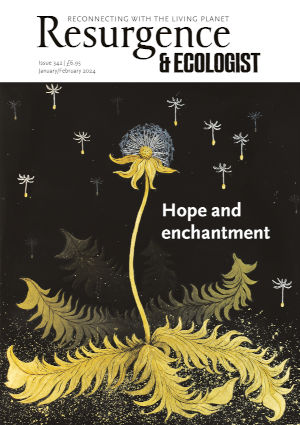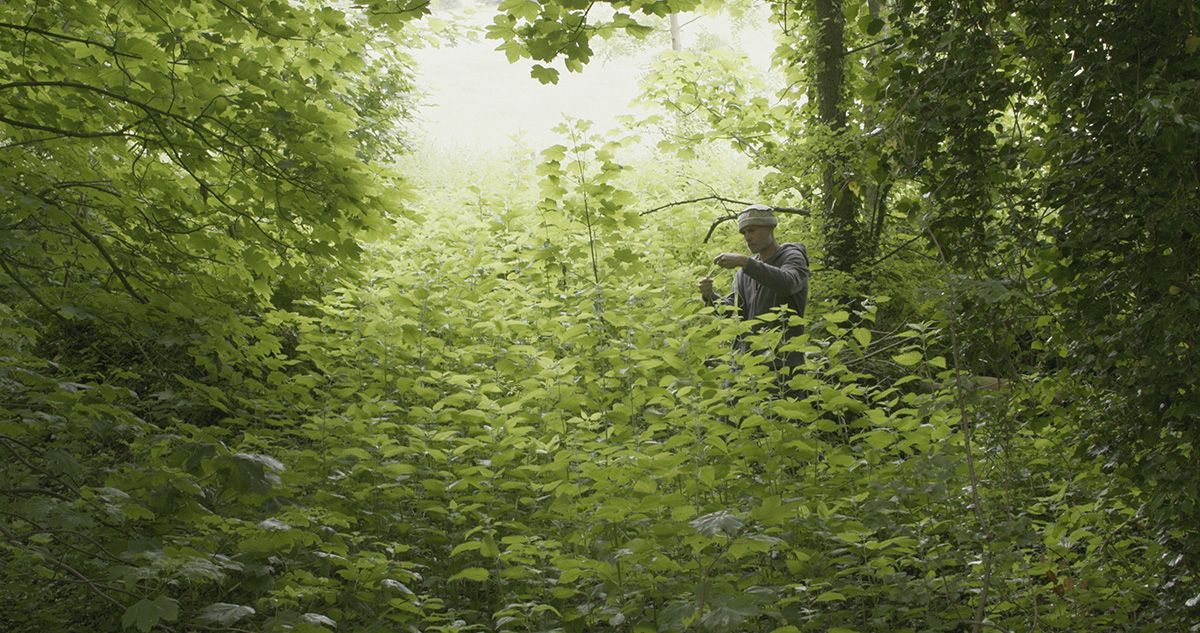The very first day I filmed my friend Allan Brown picking nettles to make textiles it seemed like I was witnessing something a bit magical. He showed me how he split the stalks to reveal the fibres in the bast (skin), before scraping and carding, and then spinning them into golden threads on a drop spindle. It was a revelation – like discovering hidden treasure inside this plant we know so painfully well. The sense of wonder I felt that day never left me, and kicked off a documentary journey that lasted years. The end result was my film The Nettle Dress, which has been playing in cinemas all over the UK.
Allan had set out with a simple question: would it be possible to make a garment just from the fibre of nettles he freely foraged from within a couple of miles of his Brighton home? It took him seven years to find out, but the answer – as worn by his daughter Oonagh in the film – is a thing of beauty. He was literally following a thread, teaching himself as he went, and learning ancient human skills of foraging, processing, spinning, weaving and sewing along the way. As a filmmaker I was captivated that it was both a practical step-by-step process and an entirely metaphorical journey.
Sadly, over the course of the making Allan lost both his father and his wife to cancer, and I lost my stepfather too. It felt that pain and grief were somehow captured in the threads, some of which Allan had spun by their deathbeds. But other life was captured too – seven summers of nettle harvests, seven winters processing and spinning. All that experience woven into cloth like prehistoric photography. All those thousands of hours of attention and devotion filling the object with intention and meaning.
The whole endeavour started to feel like a fairytale, going into the dark woods on a quest or to discover truths. One tale in particular, Hans Christian Andersen’s ‘The Wild Swans’, even has nettle textiles in it. In that story, a sister can only save her brothers from enchantment by making seven (in some versions eleven) nettle shirts. She must pick the nettles from graveyards and spin the thread in silence. She succeeds, despite the terrible blisters she gets from the nettle stings, and she is transformed. Over the years I filmed a whole series of transformations too, both external and internal. The nettles changing – from plant to fibre, fibre to thread, thread to cloth, cloth to dress. And then how Allan himself was transformed – by his trust in process and slow craft, and by the time spent in deep relationship to Nature.
I too spent long hours with nettles, making a study of them in every weather and season through the years. I filmed the stings under a microscope, captured the myriad of insects that make nettles their home, filmed the pollen puffs in summer and the skeletal stalks in winter. The more I looked, the more I seemed to see in and about this wonderful plant, which is food, fibre and medicine, and which has such a long history living alongside us humans. When filming in a local graveyard and thinking of ‘The Wild Swans’, I was struck in this place of death by their fecundity and abundance, their sheer life force.
We got to know one place in particular really very well. Lime Kiln Wood is a raggedy, ordinary-looking copse near Brighton that many might not even notice, but one that happened to be full of nettles. Over years returning there again and again, it became a place of wonder – my repeated attention rewarded with endless variation in light or mood, or an unfamiliar insect or fungus. We were becoming intimate with that place, and as such it became ever more precious and internalised. I could picture it in my mind’s eye like the face of an old friend. At the heart of both the crafting and the filming process a repeated, devoted attention; paying attention as an act of love.
In the film, Allan says: “It was as if the nettles gave me a gift.” That in this long process he learnt to change something ugly and painful into something beautiful and protective. For me, making this film has been a gift too, as much in the sharing as in the creating. I’d been keen to show it mostly in cinemas because I believe there’s a unique power to watching and sharing something together in community. So we travelled from screen to screen to present the film, often bringing the dress itself with us. We were glad to find it became a great convener for makers and Nature lovers to meet. One viewer said: “I was mesmerised. It was so quiet you could have heard a pin drop,” while another wrote: “The feeling was gossamer fine as we were held entranced by the delicate, beautiful story. There were angels in the room.”
People have asked why I spent so many years making this film with only the smallest crowdfunded budget to cover our costs. (I made many other films along the way to pay the bills.) Both the film and the dress are fairytales in the sense that they seem to make no sense in the modern world – we can’t all make clothes from nettles or work unpaid. But it felt as if the slow process gave us a space to reach for deeper truths. We tell stories to make sense of things, to inspire ourselves, to remember what’s important, to console, and to enchant. In a time of climate emergency it feels vital to realise what a wondrous world this is, and what we might lose. The actor Mark Rylance wrote: “Artists have a responsibility to tell love stories about Nature … to awaken people to make a change.” I see our film as a love story about the humble nettle, about connecting with local wild spaces near where we live, and the solace to be found there. It’s about the deep value of creativity and imagination, and a slow, mindful craft that is more in tune with the natural world.








